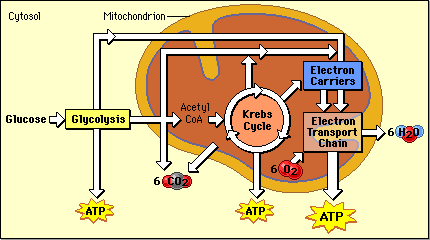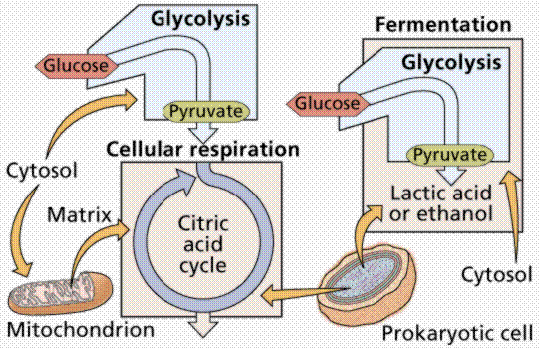|
Definition Mechanics Cell respiration |
 Nutrients commonly used by animal and plant cells in respiration include glucose, amino acids and fatty acids, and a common oxidizing agent (electron acceptor) is molecular oxygen (O2). Bacteria and archaea can also be lithotrophs and these organisms may respire using a broad range of inorganic molecules as electron donors and acceptors, such as sulfur, metal ions, methane or hydrogen. Organisms that use oxygen as a final electron acceptor in respiration are described as aerobic, while those that do not are referred to as anaerobic.
Nutrients commonly used by animal and plant cells in respiration include glucose, amino acids and fatty acids, and a common oxidizing agent (electron acceptor) is molecular oxygen (O2). Bacteria and archaea can also be lithotrophs and these organisms may respire using a broad range of inorganic molecules as electron donors and acceptors, such as sulfur, metal ions, methane or hydrogen. Organisms that use oxygen as a final electron acceptor in respiration are described as aerobic, while those that do not are referred to as anaerobic.The energy released in respiration is used to synthesize ATP to store this energy. The energy stored in ATP can then be used to drive processes requiring energy, including biosynthesis, locomotion or transportation of molecules across cell membranes. Because of its ubiquity in nature, ATP is also known as the "universal energy currency". 
|